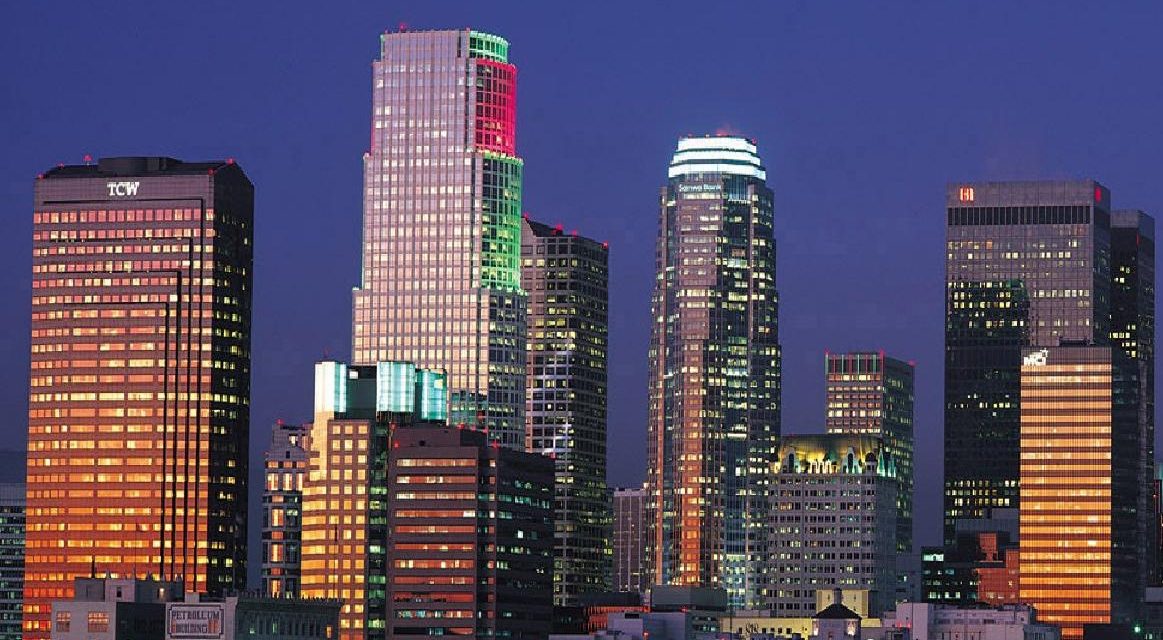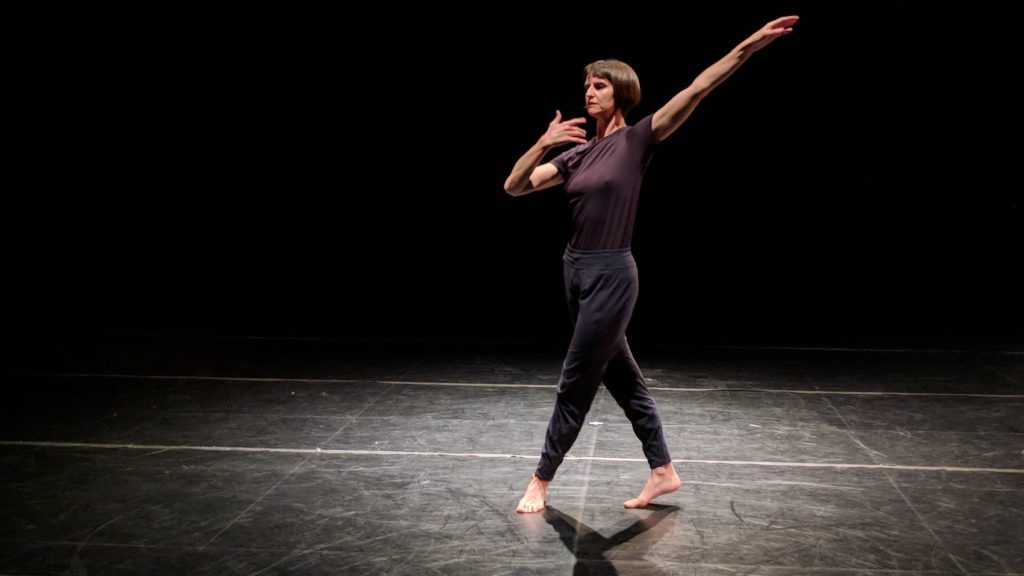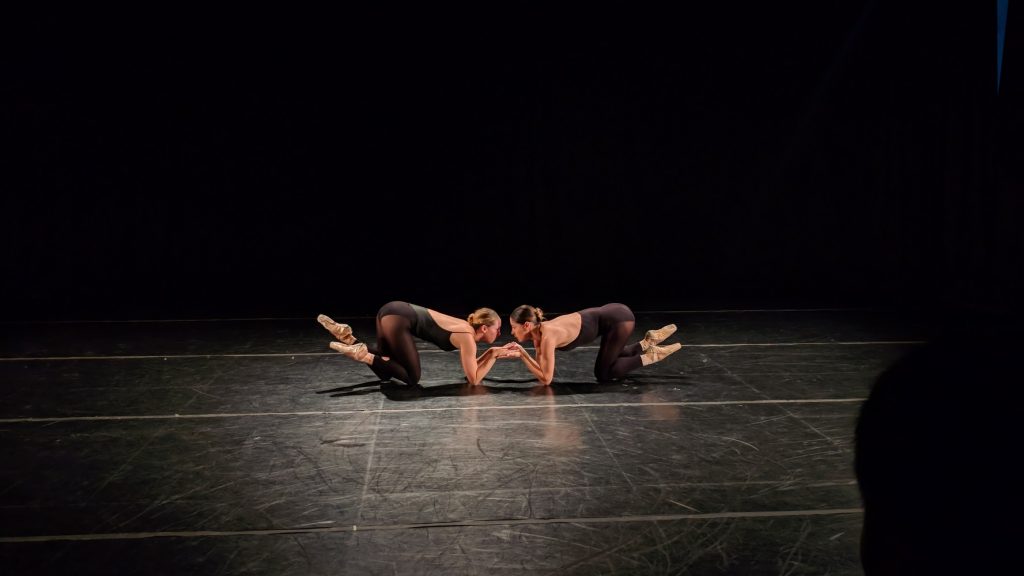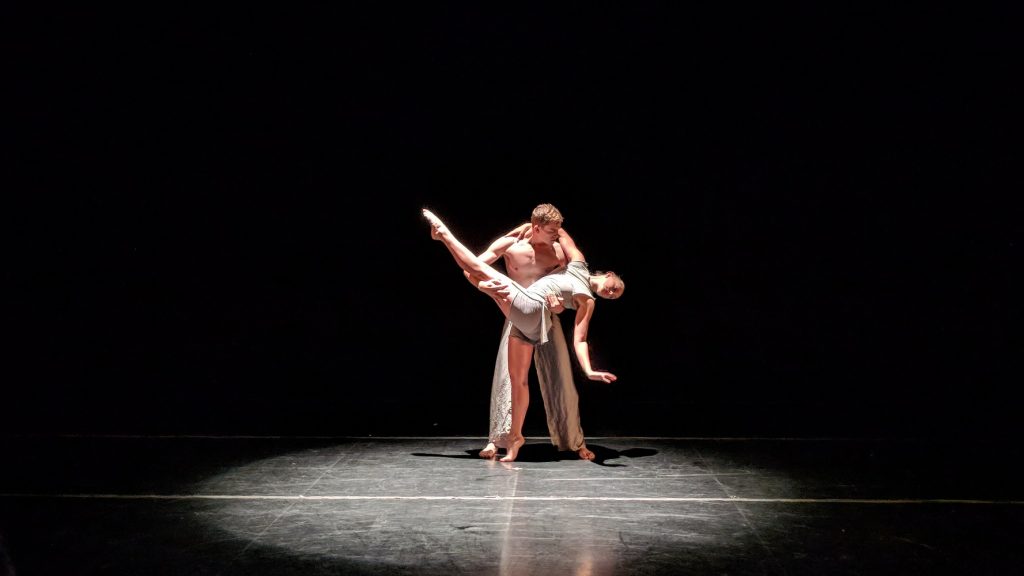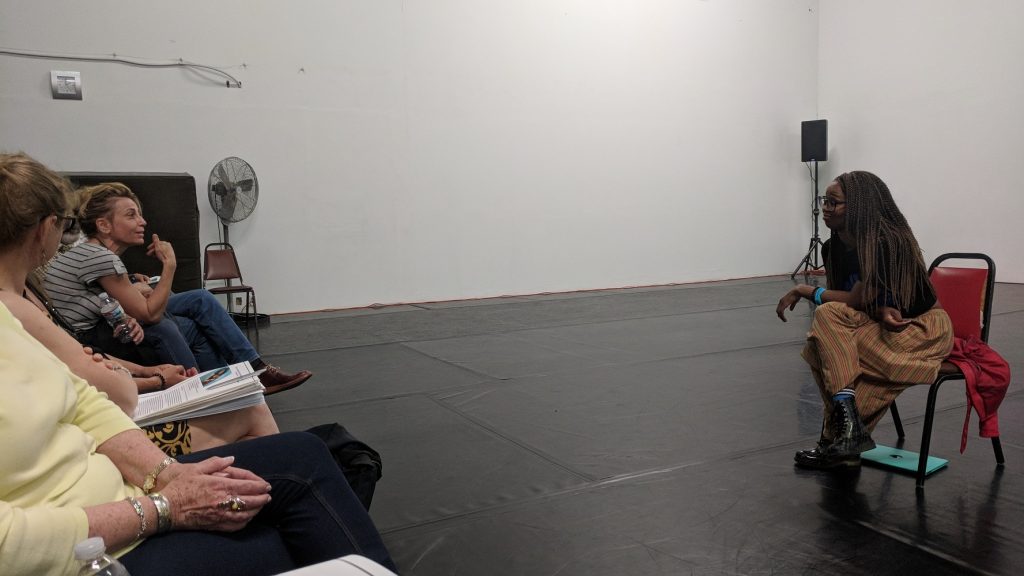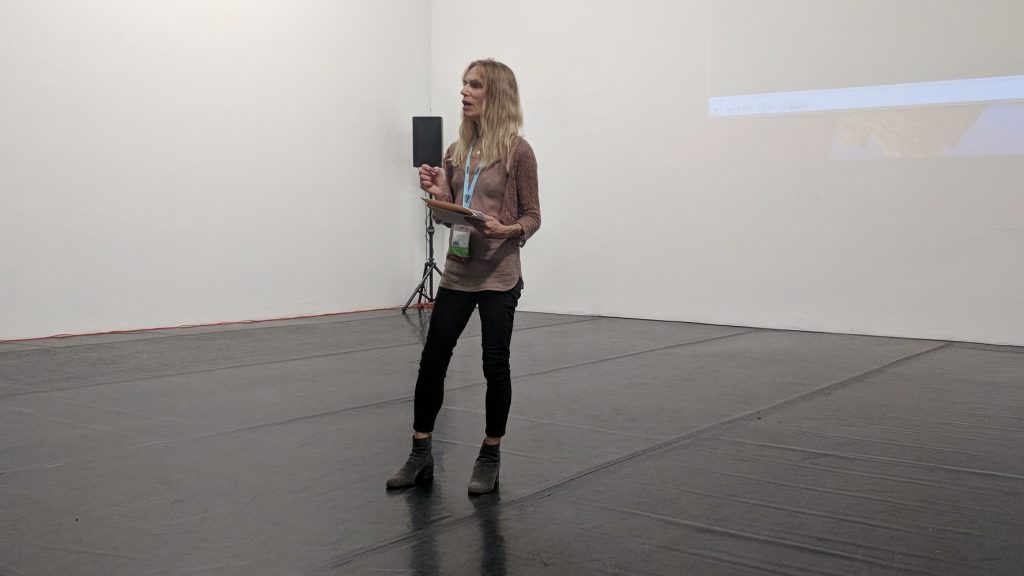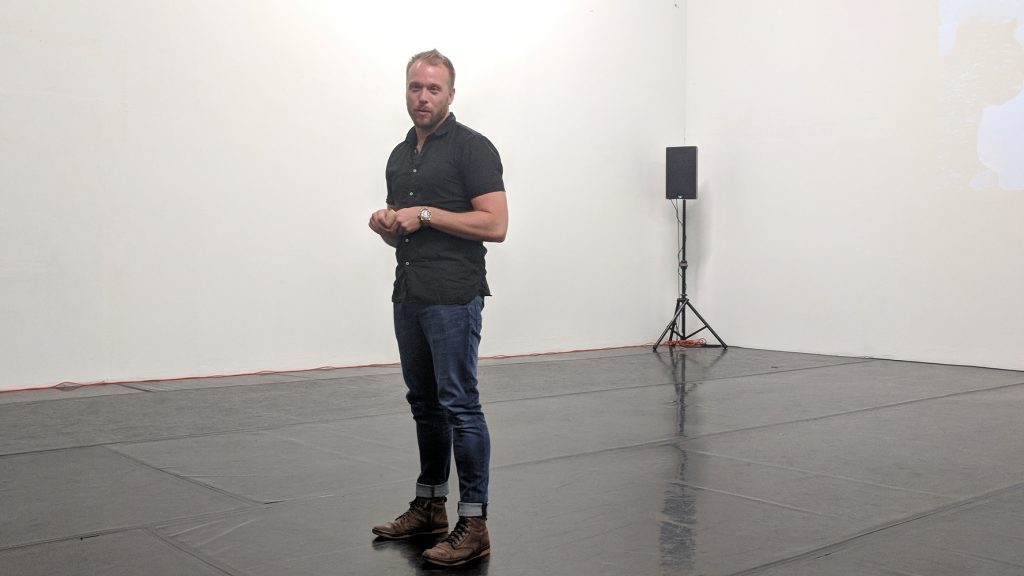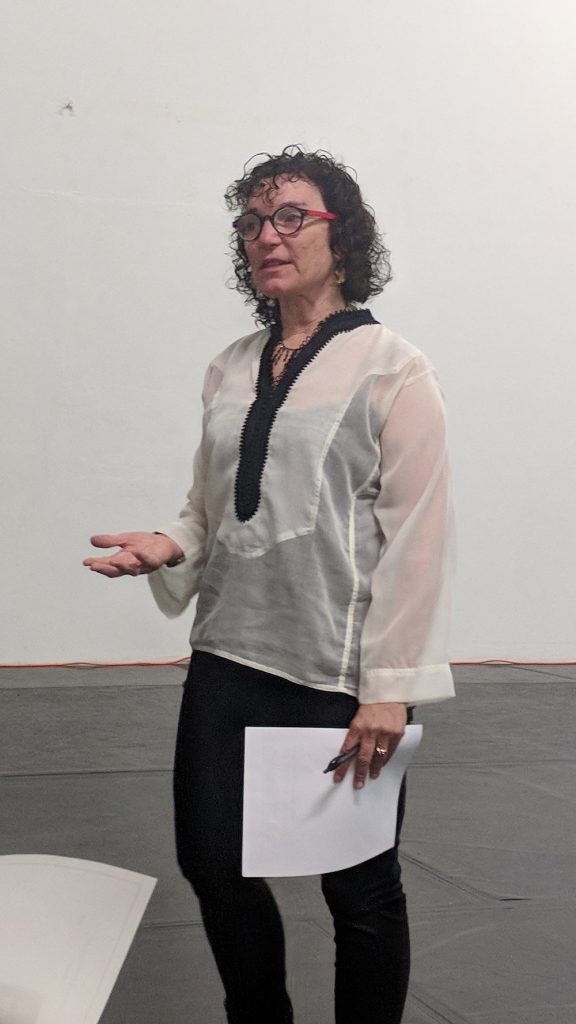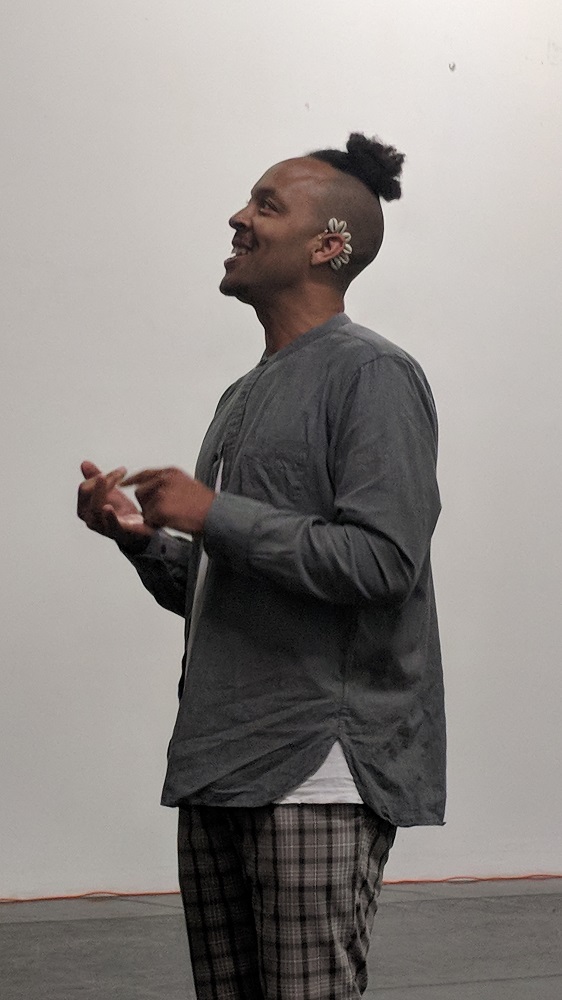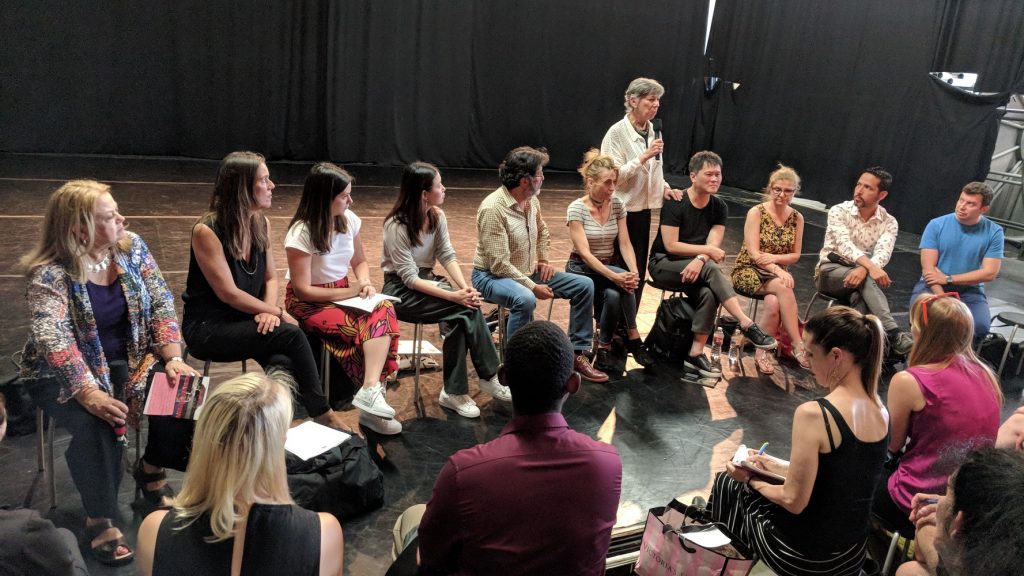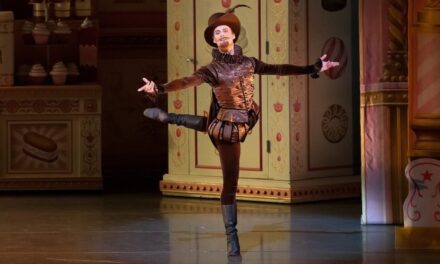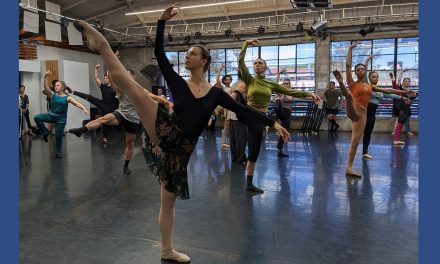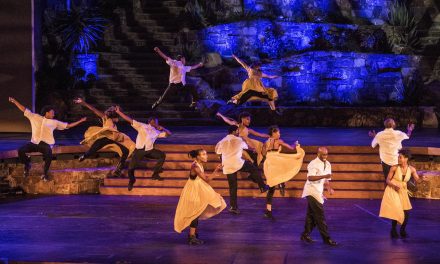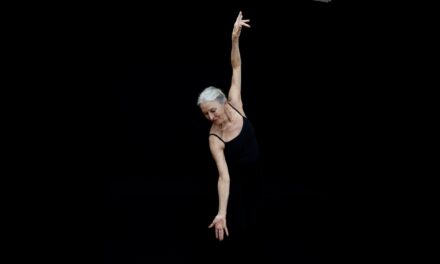Part III
Final Day of DCA LA Dance Platform
June 23, 2018
Day Four – June 10
This would be the last day of the DCA LA Dance Platform and I, for one, was sorry to see it end but also glad that I would soon be able to get some rest. All the traveling between Long Beach and LA and sitting while watching dance was fatiguing, but the energy emanating from the dancers and the international delegates was infectious. I also realized that this was the first time in months that I was able to sit and enjoy watching dance without thinking about the review that I had to write. For four days, it was possible for me to enjoy the performances without focusing on the work as a critic.
LA Dance Showcase #3 began at noon in the Diavolo Dance Studio, 616 Moulton Avenue, with the same layout as the previous showcases. Ros Warby of Ros Warby Projects performed her solo When the Sky Falls/Court Dance. Melissa Barak, the artistic director of Barak Ballet presented excerpts from three works: E/SPACE choreographed by Barak to music by David Lawrence; Darrell Moultrie’s female duet, Moments; and Desert Transport by Nicolas Blanc, music by Mason Bates. Dancer, choreographer, Artistic Director of BrockusRED, and Producer Deborah Brockus presented an excerpt of her work As Memory Fades to Whisper, music by Cheb I Sabbah, Urban Trad, William Orbit, Alex Gifford, and Tabla Beat Science.
The second half of Showcase #3 took place at Brockus Project Studios at 618 Moulton Ave # B, located a two-minute walk away within the same Brewery Arts Colony Complex. The arrangement was the same but here the works were on film projected onto a bare white wall. Shamell Bell read during her video. She is the director of Street Dance Activism and a co-founder of Black Lives Matter. The work was entitled Living is Resisting: From ‘Rize’ to Street Dance Activism as a Corporeal Pedagogy. Choreographer/filmmaker/dancer Sarah Elgart is a long-time resident of Los Angeles who works in the commercial dance and concert dance arenas. Elgart presented excerpts from her dance films Shape of Memory: Charissa; Shape of Memory: Sam; and Everywhere Nowhere, a site-specific work which was performed and filmed at LAX Airport. James Gregg and Rauf Yasit are co-founders/choreographers of Wewolf, and presented an excerpt of a 50-minute work, Henry & Edward and another entitled Fog, that was filmed in one take with the camera placed upon a drone overhead.
Janet Roston is the artistic director of Mixed eMotion Theatrix. She presented film excerpts from a full-evening work Anais, A Dance Opera that Roston choreographed and directed. Jennie MaryTai Liu’s company is called Grand Lady Dance House and her contribution was a film excerpt of her art installation House Music: A Residency at The Mistake Room. D. Sabela grimes is an independent dance/music artist who showed excerpts from a work entitled ELECTROGYNOUS for which he choreographed and composed the music.
Just before the final film, Johnson placed a called to choreographer/dancer and artistic director of Ate9, Danielle Agami in Seattle, WA. Agami was there for the premiere of a new work but, except that it was on speaker phone, she followed the same process as the other artists. The film was excerpts of Agami’s full-evening work calling glenn, with music by Wilco percussionist Glenn Kotche.
International Delegate Panel Discussion
Everyone returned to the Diavolo Dance Studio for the International Delegates Panel Discussion led by Andrea Snyder and Carolelinda Dickey of American Dance Abroad. Each of the nine delegates took a few minutes to introduce themselves and talk about what position they held in their country. Each spoke to the issues of limited funds and, most importantly, the best ways for American dance companies to bridge the gap between them and the international presenters. They spoke to what they thought of American dance before they arrived and how this experience did or did not alter what they knew before seeing four days of dance in Los Angeles. Most were pleasantly surprised and in awe at how individualistic each company appeared, and how the artists managed to create new works without much financial support from the government or without owning their own studios.
The delegates took questions from the audience, which was comprised of many of LA’s dance artists, presenters and producers. Stereotypes regarding both sides began to dissolve, and eyes were opened as to what needed to be accomplished by the LA artists to meet the challenges of putting American dance companies back onto foreign dance rosters.
The delegates answered inquires about their impressions of LA dance. Chéma Gargouri of Tunisian expressed her joy at how many women were dancing, choreographing and running their own companies. She saw the activism in LA’s dance, expressing resistance against racial, gender and sexual suppression. Eleno Guitierrez from Mexico City said that we were such close neighbors and should find a way to work together more with not only performances, but also with artist exchanges, artist residencies and community outreach programs. They all spoke to how open the work was here in LA and unlike that of anywhere else they had been.
A few delegates stated how the audiences in their countries knew very little about dance here because American companies had not performed there for many years except for a few individual artists traveling abroad to teach. Many abroad had heard stories that American dance was ugly. Clearly the challenges were many, but no one considered them insurmountable. It all had to begin with dialogue between the artists and the presenters.
The International Panel was one of the most exciting for the LA dance artists who attended the DCA LA Dance Platform. It informed them on what work lay ahead if they had plans to tour in Europe, South America, Africa or Asia. It also allowed them the opportunity to hear feedback on how their work was perceived through foreign eyes and minds.
After a brief reception at the Brockus Project Studios, everyone parted ways to prepare for the final event of the DCA LA Dance Platform.
The Luckman Fine Arts Complex at Cal State L.A.
The DCA LA Dance Platform and the American Dance Abroad concluded with a full production concert at The Luckman Fine Arts Complex at California State University, Los Angeles. The program featured tap company, Syncopated Ladies; CONTRA-TIEMPO/ Urban Latin Dance Theatre; hip hop based Versa-Style Dance Theatre; and Los Angeles Contemporary Dance Company. The performances stood on their own, with full stage production. No speaking from each artist and no follow-up questions.
Programs were not provided, but I found out that Syncopated Ladies performed Excerpt from “Syncopated Ladies: Live“; Versa-Style Dance Theatre performed a version of Box of Hope, choreographed by Jackie Lopez aka Miss Funk and Leigh Foaad aka Breeze-lee to a variety of pop songs; CONTRA-TIEMPO/ Urban Latin Dance Theatre performed work-in-progress joyUS justUS. It was conceived and directed by the company’s Artistic Director Ana Maria Alvarez and choreographed in collaboration with company dancers Isis Avalos, Chris Cuenza, Jannet Galdamez, Samad Raheem Guerra, Bianca Medina, Diana Toledo & Shantel Ureña. The music was by d. Sabela Grimes. The concert closed with Los Angeles Contemporary Dance Company performing EBBA, choreography by Genevieve Carson with an original music score by Robert Amjärv.
A brief reception with finger food took place in the Complex plaza area during intermission and we all said our good byes in the theater lobby following the performance. I managed to speak to three of the nine delegates afterwards and as is true with audiences everywhere, their impressions varied with each person. “That dance did not speak to me.” “I loved the message that dance had to say.” “It was a nice evening, but a bit too long.” “You liked that dance? It was not for me, but the dancers were wonderful!” We have all had these conversations with friends and colleagues in theater lobbies following every performance.
In Conclusion
The DCA LA Dance Platform schedule was exhausting but totally revitalizing and informative. My only complaint was that it piggy backed with DANCE/USA, making it impossible for the two organizations to share many of their events. Los Angeles is too spread out for people to dash about the city all day long. The travel expenses became high no matter how one traveled. The lowest price I paid for parking was ten dollars for a few hours. I once paid twelve dollars to spend two hours at one venue, followed by another ten-dollar parking fee, and then another. Uber and Lyft are not cheap, although several people did share Ubers. When feasible, many of the delegates chose to walk from venue to venue.
The costs, however, would not prevent me from attending the next DCA LA Dance Platform or the one after that. I hope that the City of Los Angeles, the Department of Cultural Affairs and all the venues that hosted the showcases and performances, will continue their support and help make this an annual event. Thanks and appreciations go out to each one of you. Thank you to Ben Johnson and Danielle Brazell of the Department of Cultural Affairs Los Angeles; Andrea Snyder, Carolelinda Dickey of American Dance Recon/American Dance Abroad; Grand Performances; Downtown Dance and Movement Center; L.A. Dance Project Studio; Los Angeles Dance Practice; Diavolo Dance Studio; Brockus Project Studios; The John Anson Ford Amphitheater; Luckman Fine Arts Complex at Cal. State L.A.; and Catharine Soros/Center Dance Arts. Thank you to all the talented dance artists, presenters and promoters who participated in or who supported their colleagues by attending the DCA LA Dance Platform 2018. Let us now continue the buzz about dance in Los Angeles by supporting our dance artists and helping to organize DCA LA Dance Platform 2019.
To read Part I, click here.
To read Part II, Click here.
Featured photo from the web.

